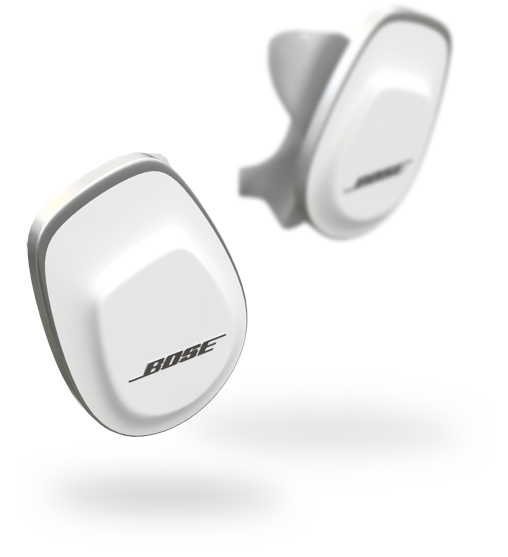Where would we be without coffee? Coffee has existed for centuries, and its popularity as a morning pick-me-up has never really dwindled. It is the most common and consumed drink to ever exist that serves primarily as an energy booster.
The culture and history behind coffee and the art of coffee making are so widely known and instilled due to the widespread dependence most of society has developed on the rich, powerful drink. People rely on coffee to remain alert throughout their workday and go about their day-to-day lives in general.
It’s irrefutable that the coffee market is immensely profitable due to its staggering popularity. Most coffee drinkers know how expensive it can be to purchase one every day. Although your favourite iced oat milk latte is probably around 6 or 7 dollars, it adds up quickly.
As a result, at-home coffee makers have become a huge investment many have decided to take the plunge with over the past several decades.
Given the popularity of this market, innovation in coffee makers has seen great advancements. Different coffee-making techniques, equipment, and technology, as well as blends and types of coffee, have emerged in accordance with the growing interest people have developed and their shifting needs.
Below is a brief history of how coffee makers have changed throughout history through brilliant design innovation!
Origins of Coffee
The coffee maker’s legacy began around 1615 when Europeans first got their hands on coffee beans from Ottoman Turkish traders. At this time, Turkish coffee was solely made by combining ground coffee and water in a small copper pot. The French opted to use a linen bag that they filled with ground coffee and then infused water with to make the coffee less gritty.
The “coffee pot” was not invented until the 1800s by Jean Baptiste de Belloy, who developed the very first drip coffee pot. The coffee pot had two levels, with a filter in between. The top level housed the coffee grounds and was where hot water was poured to allow the coffee to drip to the lower part of the pot.
The major fault in this design was that the water took too long to pass through the filter. As a result, the hot water would slowly become lukewarm, and the final product would be too cold by the time the coffee maker was finished!

To fix this problem, Count Rumford cleverly proposed enclosing the pot with an insulating jacket that would keep it warm while the hot water poured into it dripped through. Alternatively, in 1819, the French created a new innovation to the drip pot design in which there were three parts to the pot rather than two.
For this innovative coffee maker, water was placed in the bottom chamber, the coffee was encased in the middle, and the top would be empty. Coffee was then made by placing the pot on the stove and waiting for the water to boil. Once it reaches a boil, the user would flip the pot upside down and take it off the stove. This pot was named the Neapolitan pot, or the flip pot.
This model was then improved by turning it into a two-chambered pot with a tube. However, this form of coffee making left the coffee to flavorless and with no aroma.

The Switch to Espresso Machines
A reinvention of the coffee machine – espresso machines didn’t appear until the 19th century. At this point, the greatest innovation in coffee makers was using steam pressure as it was found that placing the water under great pressure was the best way to get the robust flavour from the coffee.
One of the first espresso machines was made by Luigi Bezzera in Italy. This machine produced steam and boiled the water with a precise level of pressure so the coffee could be produced straight into a cup in a matter of seconds. Espresso means “fast” in Italian, after all!
Ultimately, Bezzera sold his original patent to Pavoni, who successfully marketed the espresso machine worldwide. Thus, the Pavoni Machine was made. Despite its popularity, this version of the espresso machine had some faults. It was hard to operate if the temperatures of the water and steam weren’t exactly right, and they couldn’t handle cream.
Another huge aspect of this machine was that it was only available in coffee shops, meaning that you couldn’t make a cup at home.

The At-Home Espresso Machine
In 1933, Bialetti created a new model of the coffee pot called the Moka Express. Like the previous coffee pots we’ve explored, this pot was made of aluminum with three chambers. The bottom chamber is where the water is stored, and a filter with an extended piece connected to the bottom was fixed between the water and where the coffee was stored.
This pot can be conveniently placed on the stove to heat up. You only need to wait for that signature gurgling nose to ring from your pot, which signals that it is ready to drink, and you can pour your fresh coffee out!
The Moka Express is still a popularly used design for coffee making, as coffee makers and fans still prefer the traditional taste and method of Italian coffee over newer methods.
It wasn’t until 1947 that a new espresso machine, called the Gaggia machine, was developed in Milan by a coffee bar owner. The biggest innovation in coffee makers with this new machine was that it was operated with a lever and a spring-loaded piston.
The operator would pull down to a level to release hot water but could also release and expand the spring to force hot water out at high pressure. The biggest innovation in this machine was the ability to control pressure and temperature, allowing the coffee to have a richer and smoother taste.
The 1960s marked the final and largest innovation in coffee makers. Ernesto Valente developed a coffee machine that uses an electric pump to pressurize the water to make it go through the ground coffee. This machine would be under the FAEMA company and would require some practice before creating good results – thus creating the now common skill of being a barista.

Today’s Newest Innovations in Coffee Makers
Innovation in coffee makers has come a long way, as there are a couple of different types of coffee machines available depending on the type and style of coffee you prefer. One of the most popular types of coffee machines to date is the pod-style coffee machines such as Keurig, Nespresso and Illy.
The popularity of these machines can be due to their convenience and variety of options to choose from. Simply stick a pod of coffee of your choosing – from a variety of strengths of coffee and flavours – and hot, high-pressured water pumps through the ground coffee within the pod and then drips through to your cup.
As the owner of the machine has to put in virtually no work, this machine was a great innovation in coffee makers as it is not only easy to use but saves a lot of time for those who are always on the go and need their coffee fast and fresh.

Another innovation in coffee makers is the traditional drip coffee maker that we all know and love. These coffee makers come with built-in heaters, so it is just a simple matter of switching on the machine, placing the filter, filling the machine with water and letting it do its magic.
The best thing about these coffee machines is that they maintain their optimal temperature for brewing the perfect cup of coffee, giving the owner no needed skill in maintaining the temperature. Another amazing aspect of this design is that combatting the previous problems with past coffee makers, this machine retains the heat of the coffee due to its narrow design and removable lid.
A helpful feature found in almost all modern-day coffee machines is the built-in ready sound that signals when the coffee has finished. Unlike the previously mentioned Pod machine, cleaning this type of coffee machine is simple as all parts of the machine are dishwasher safe.

Cappuccino and Espresso Machines
As innovation in coffee makers and coffee culture reaches its peak in popularity, a lot of people have become more interested in taking up the art of coffee making for themselves as a hobby. As previously mentioned, complex coffee-making machinery has created new skills and jobs for baristas. Even though innovation in coffee has made it easy to be able to put coffee grounds into a machine, press a button and wait for your cup to fill up, making different kinds of caffeinated drinks is not as easy.
But of course, innovation in coffee makers has allowed for greater products to be made that make the process of creating specialty coffee drinks easier! Reinventing coffee machines, the features included in new coffee machines, such as cappuccino and espresso machines, not only pressurize the water that goes through your coffee but also include automatic options that can create cappuccinos, espresso and lattes all at the touch of a button. Rather than just pressurizing water, these machines can froth up your milk and add extra shots of espresso to your cappuccino and lattes.

If you have a great new invention idea and you’d like to learn more about this process, get in touch with MAKO today and visit our website to find out more. Or feel free to give us a call at 1-888-806-MAKO, and we can set you up on a call with our product strategists!
About: MAKO Design + Invent is the original firm providing world-class consumer product development services tailored to startups, small manufacturers, and inventors. Simply put, we are the leading one-stop-shop for developing your physical product from idea to store shelves, all in a high-quality, cost-effective, and timely manner. We operate as one powerhouse 30-person product design team spread across 4 offices to serve you (Austin, Miami, San Francisco, & Toronto). We have full-stack in-house industrial design, mechanical engineering, electrical engineering, patent referral, prototyping, and manufacturing services. To assist our startup and inventor clients, in addition to above, we help with business strategy, product strategy, marketing, and sales/distribution for all consumer product categories. Also, our founder Kevin Mako hosts The Product Startup Podcast, the industry's leading hardware podcast. Check it out for tips, interviews, and best practices for hardware startups, inventors, and product developers. Click HERE to learn more about MAKO Design + Invent!







